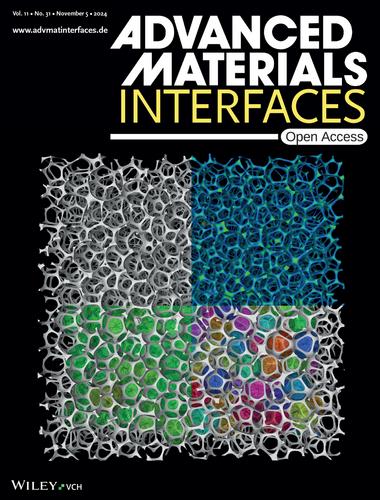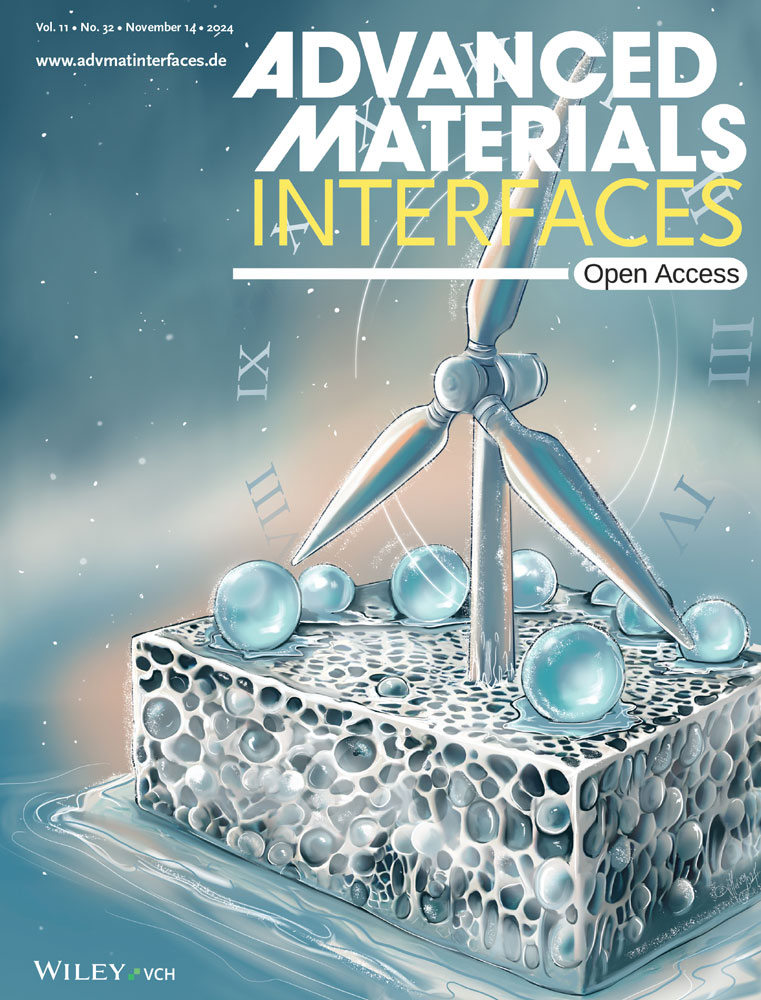Methodology for Liquid Foam Templating of Hydrogel Foams: A Rheological and Tomographic Characterization (Adv. Mater. Interfaces 31/2024)
IF 4.3
3区 材料科学
Q2 CHEMISTRY, MULTIDISCIPLINARY
引用次数: 0
Abstract
Hydrogel Foams
Coupled with rheology, X-ray microtomography analysis is a powerful tool to understand the key factors affecting the morphology of hydrogel foams. From the raw 3D image (top left), the analysis of the structure thickness (top right), the identification of single cells (bottom right) and of their size (bottom left) allow a full structural characterization. More details can be found in the article 2400337 by Manon Jouanlanne, Aurélie Hourlier-Fargette, and co-workers.

水凝胶泡沫的液体泡沫模板化方法:流变学和层析表征(Adv. Mater. Interfaces 31/2024)
水凝胶泡沫与流变学相结合,X 射线显微层析成像分析是了解影响水凝胶泡沫形态的关键因素的有力工具。通过原始三维图像(左上)、结构厚度分析(右上)、单细胞识别(右下)和单细胞大小分析(左下),可以获得全面的结构特征。更多详情,请参阅由 Manon Jouanlanne、Aurélie Hourlier-Fargette 及合作者撰写的文章 2400337。
本文章由计算机程序翻译,如有差异,请以英文原文为准。
求助全文
约1分钟内获得全文
求助全文
来源期刊

Advanced Materials Interfaces
CHEMISTRY, MULTIDISCIPLINARY-MATERIALS SCIENCE, MULTIDISCIPLINARY
CiteScore
8.40
自引率
5.60%
发文量
1174
审稿时长
1.3 months
期刊介绍:
Advanced Materials Interfaces publishes top-level research on interface technologies and effects. Considering any interface formed between solids, liquids, and gases, the journal ensures an interdisciplinary blend of physics, chemistry, materials science, and life sciences. Advanced Materials Interfaces was launched in 2014 and received an Impact Factor of 4.834 in 2018.
The scope of Advanced Materials Interfaces is dedicated to interfaces and surfaces that play an essential role in virtually all materials and devices. Physics, chemistry, materials science and life sciences blend to encourage new, cross-pollinating ideas, which will drive forward our understanding of the processes at the interface.
Advanced Materials Interfaces covers all topics in interface-related research:
Oil / water separation,
Applications of nanostructured materials,
2D materials and heterostructures,
Surfaces and interfaces in organic electronic devices,
Catalysis and membranes,
Self-assembly and nanopatterned surfaces,
Composite and coating materials,
Biointerfaces for technical and medical applications.
Advanced Materials Interfaces provides a forum for topics on surface and interface science with a wide choice of formats: Reviews, Full Papers, and Communications, as well as Progress Reports and Research News.
 求助内容:
求助内容: 应助结果提醒方式:
应助结果提醒方式:


